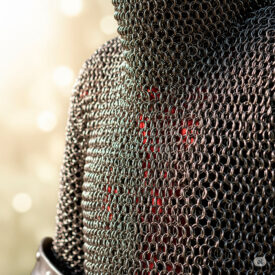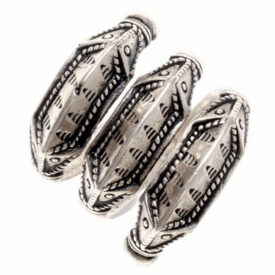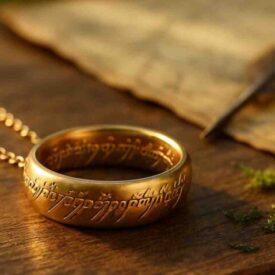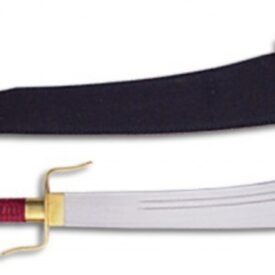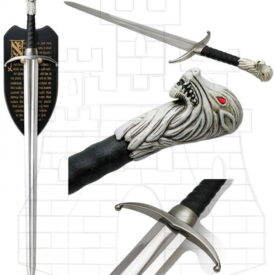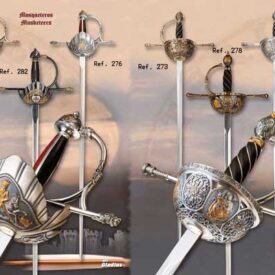Chainmails are protections made of forged iron, steel, aluminium rings, organized in a way that every single ring is joined to, at least, other four rings composing a knitting. In spanish they are also known as “Lorigas”. As a complement for the coat of mail it was used a kind of hood of mail (as a headdress) to cover and protect the head, it was called chainmail hood or chain coif.
Roman armies introduced the “lorica segmentata” and kept it in use between the assistants and the legionaries for the imperial period. Roman chainmail was made of iron with rings that sometimes were not bigger than 3mm of diameter and it also used the known pattern of 4 in 1. Frequently half of the rings were closed, maybe sheet die cut, or made up of soldier wire; but the rest were clinched. Closed rings had an square section, it means, metal thickness was similar to the difference between the outer and the inner diameter. Clinched rings used to have a circle section, we have proofs that rings were golden or tinned.
Chainmails were made with the shape of long shirts which offered resistance to cuts and it was invented (probably) by Celts in Vth century BC. It was also used by romans for Middle Age until XVIth century. Though it offered a huge resistance to hits; it was vulnerable to the pint of thin wapons as arrows but for the clinched rings. This protection has been employed even in XXth century as a way to have a defense against the metal fragments jumped into the World War I tanks.
Chainmails ususally didn´t have sleeves or they were really short. Shoulders were protected specially by a piece in form of U joined by behind to the chainmail with a line of rings; leaving in front the arms of the U wich are around the neck and joined to the front by a metal piece tight to clinched butttons. This piece used to be borded with a piece of folded and sewn skin. Related to the assistant cavalry and some officers, this piece had a circle form making it look more like a cape joined to a bolt.
To get the maximum protection and convenience, it was placed a padding piece beneath the chainmail. The mail protects very well from cuts and drilling hits, but regrettably it doesn´t protect from contusions, unlike the plaques armours that share the force of the impact by the entire plaque. That´s why an inner padding multiplies the chainmail´s effectiveness.




